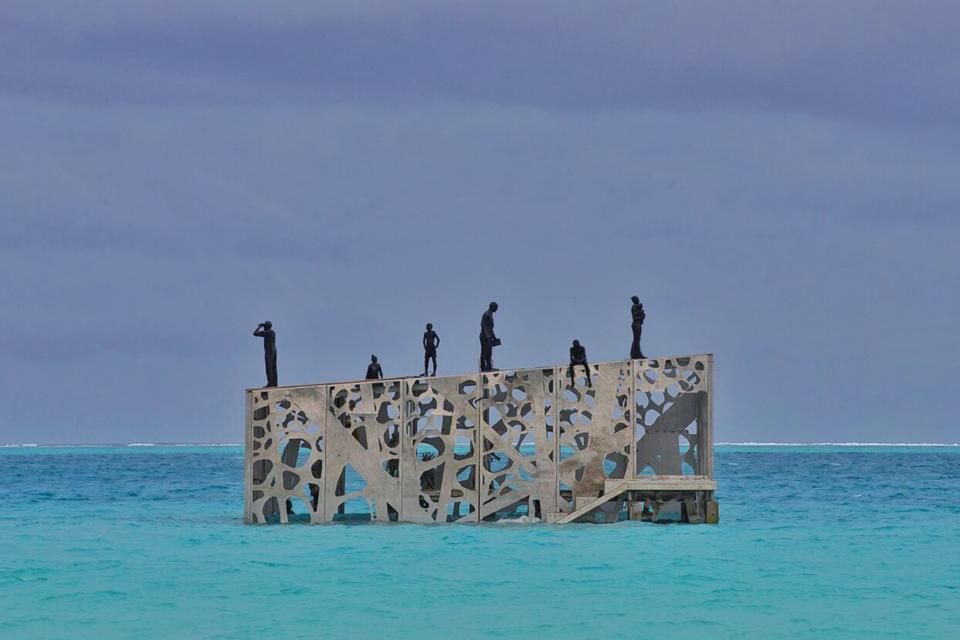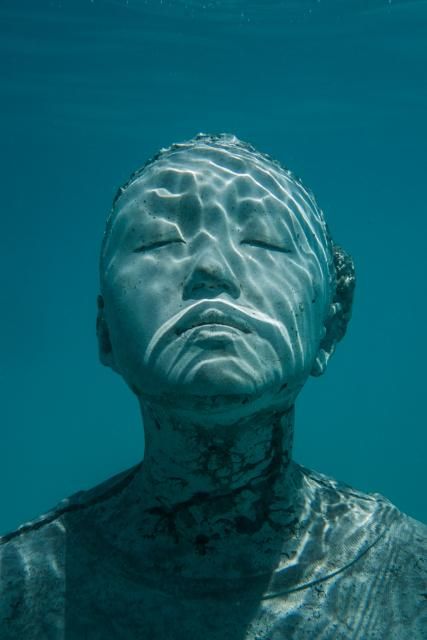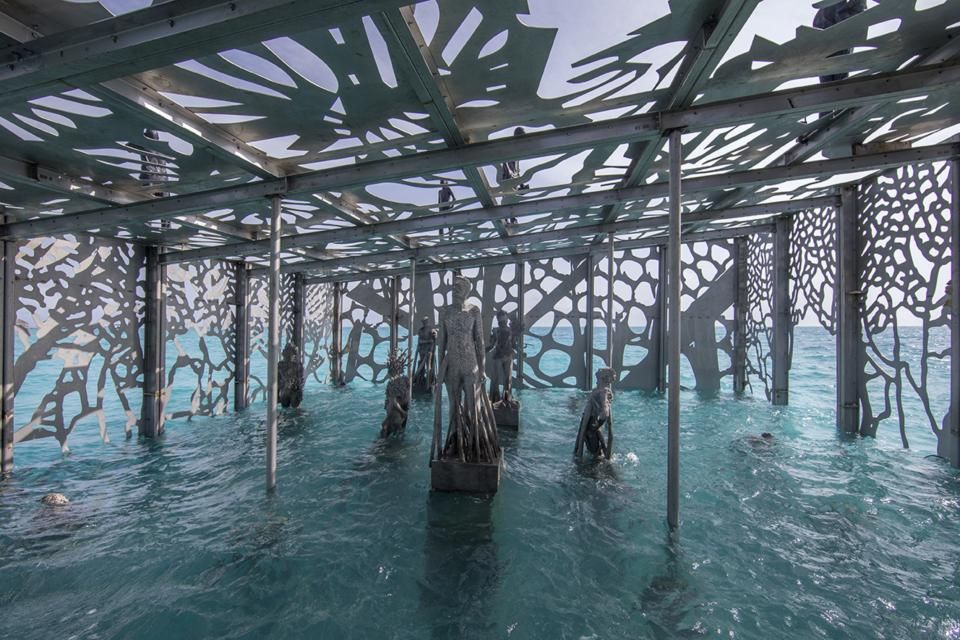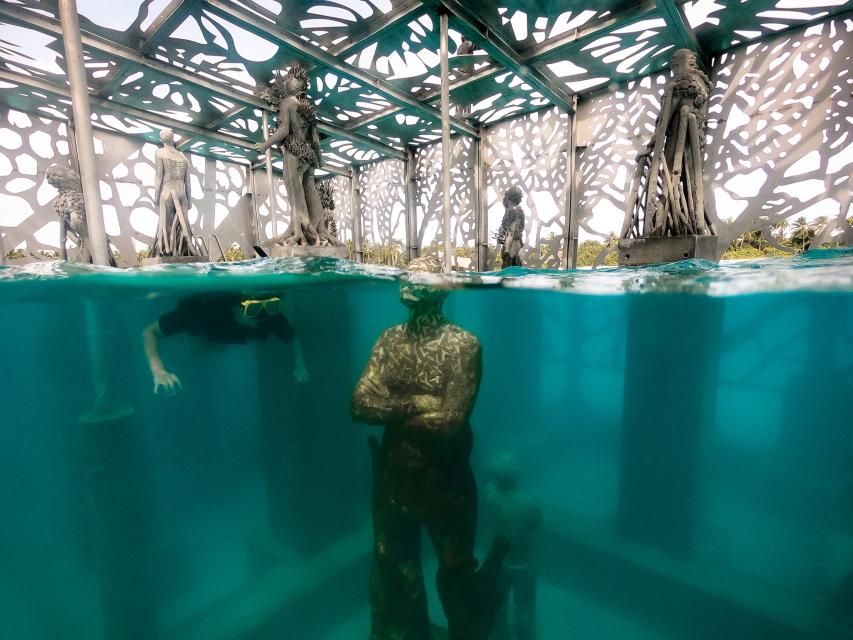Maldivian Government Destroys World’s First Intertidal Art Gallery
Before President Abdulla Yasmeen lost the country’s election, his government ordered the demolition of the conservation-minded underwater sculpture garden
Update, September 24, 2018: The world’s first semi-submerged art gallery space is no more. The Maldivian government ordered the destruction of the Coralarium at Fairmont Maldives days before incumbent President Abdulla Yasmeen lost the country’s September 23 presidential election. The Maldives Independent reports that local media was told the approximately 30 sculptures featured in British sculptor and naturalist Jason deCaires Taylor’s work, which were based off casts of real people, were declared idols and had to be removed to “protect the five tenets of Islamic shariah.”
Sirrufenfusheega E Thanuge Management in Behetti Budhu Thah Dhivehi Sarukaarun Nagaa Nimmaifi. #YameenSaheem2018 pic.twitter.com/dZB7mfdmxY
— Ahmed Nihan (@ahmed_nihan) September 21, 2018
In a statement, Taylor said: “I was extremely shocked and heartbroken to learn that my sculptures have been destroyed by the Maldivian Authorities at the Coralarium, despite continued consultations and dialogue. The Coralarium was conceived to connect humans to the environment and a nurturing space for marine life to thrive. Nothing else! The Maldives is still beautiful, with a warm and friendly population but it was a sad day for art and sad day for the environment.”
According to Al Jazeera News, the "unprecedented raid" occurred after President Yasmeen "railed against what he said was a plot by the 'Western-backed opposition' to undermine Islam in the Maldives in advance of a highly charged election."
When the Coralarium was first unveiled in July, Taylor called it “a place of preservation, conservation and education." Since 2014, the low-lying atoll nation has been struck by severe coral bleaching, and the artwork was designed to create artificial reefs over time. Read Smithsonian.com's initial coverage of the Coralarium:
British sculptor Jason deCaires Taylor has made a name for himself with art that primarily caters to the scuba diving and snorkeling set. In 2006, he created the world’s first underwater sculpture park off the coast of Grenada. In 2009, he co-founded the Museo Subacuático de Arte off Mexico’s Yucatan, which houses some 500 submerged statues. In 2016, he launched Europe’s first underwater sculpture garden in Lanzarote.
In comparison, his latest project in the Maldives is a somewhat more accessible experience: As Jessica Stewart at MyModernMet reports, it's the world’s first intertidal art gallery.
The piece is called “Coralarium,” and it's located at the luxury hotel the Fairmont Maldives Sirru Fen Fushi. To get to the art, visitors can follow a long pool that leads to the sea; there underwater poplars and living staghorn coral mark a path toward a staircase where the partially submerged, stainless-steel cube rests. Inside the porous enclosure are nearly 30 pH-neutral concrete statues—many of which are casts of local Maldivians—which are checkered with white fragments of dead coral to promote the colonization of future coral polyps. The area is also seeded with coral to encourage growth.
In a brief documentary, Taylor says that the sculptures interact with nature on three different levels. There are sculptures on top of the cube that are set against the sky; sculptures in the tidal area that exist both above and below the water; and sculptures that are completely submerged, which will eventually be covered in coral. The interaction of light on the water and the steel, not to mention the constant evolution of the sculptures themselves means that every visit to the gallery catch the art in a different state. “It’s about taking all the elements of our planet and showing that everything is connected,” he says. “We’re all interdependent and that’s a fundamental aspect of the installation.”
The cube also flips the script when it comes to human–wildlife interaction. “It's almost like an inverse zoo,” says Taylor. “In cities, we go into space and look at caged animals. Whereas this is almost like we’re the tourists, but we’re in the cage and the marine life can come and go and look at us.”
According to a press release, visitors to the resort on Shaviyani Atoll can tour the “Coralarium” with a guide who will explain the sculptures and the marine wildlife colonizing the exhibit.
The artwork is also a way for visitors to the Maldives, a remote island chain in the Indian Ocean, to begin engaging with the local ecosystem and learn about threats facing coral reefs and other ocean habitats.
*Editor's note, September 24, 2018: A previous version of this article's update sourced quotes from Instagram that have since been removed. A statement from the artist on the destruction of the work has also been added.



